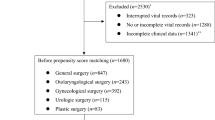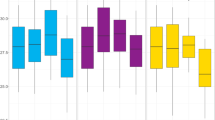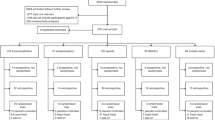Abstract
Design
This reports on a randomised controlled trial conducted in Turkey.
Intervention
Children were recruited to the trial who had intellectual disabilities and who underwent general anaesthesia for their dental treatment. Anaesthesia was randomly assigned to be maintained with sevoflurane (2.0–3.0%) or halothane (1.0–1.5%) after participants received inhalation induction either with sevoflurane (8.0%) or halothane (5.0%) and nitrous oxide in oxygen (50:50). Immediately after induction, a suppository of diclofenac was given to all patients. The children also received fentanyl, atropine and atracurium besylate intravenously.
Outcome measures
The time required for recovery (measured using the Aldrete Scale) and the length of time taken before they were discharged (the postanaesthetic discharge scoring system) from the hospital were noted. Pain and agitation were recorded using a visual analogue scale (0 to 10). Other postoperative morbidities, including crying, nausea and vomiting, bleeding and drowsiness, were also noted for 24 h after the operation.
Results
A total of 86 intellectually disabled children were recruited. Forty-two children received sevoflurane whereas 44 received halothane. The most common morbidities during the postoperative 24 h were agitation and pain, and their occurrence was significantly more common in the sevoflurane group than in the halothane group (P<0.05). The recovery time was shorter in the sevoflurane group, but the difference was not statistically significant. There was no difference between the groups in the discharge time.
Conclusions
Apart from more postoperative agitation and pain after awakening from sevoflurane, the quality of recovery was similar between sevoflurane and halothane in the recovery room and at home during the first 24 h.
Similar content being viewed by others
Log in or create a free account to read this content
Gain free access to this article, as well as selected content from this journal and more on nature.com
or
References
Paris ST, Cafferkey M, Tarling M, Hancock P, Yate PM, Flynn PJ . Comparison of sevoflurane and halothane for outpatient dental anaesthesia in children. Br J Anaesth 1997; 79:280–284.
Blayney MR, Malins AF, Cooper GM . Cardiac arrhythmias in children during outpatient general anaesthesia for dentistry: a prospective randomised trial. Lancet 1999; 354:1836–1837.
Keaney A, Diviney D, Harte S, Lyons B . Postoperative behavioural changes following anaesthesia with sevoflurane. Paediatr Anaesth 2004; 14: 866–870.
Author information
Authors and Affiliations
Additional information
Address for correspondence: Dr Ersin, Ege University Dental Faculty, Department of Pedodontics, 35100 Bornova-Izmir, Turkey. E-mail: nazan@dent.ege.edu.tr.
Ersin NK, Önçag O, Cogulu D, Çiçek S, Balcioglu ST, Çökmez B. Postoperative morbidities following dental care under day-stay general anaesthesia in intellectually disabled children. J Oral Maxillofac Surg 2005; 63:1731–1736
Rights and permissions
About this article
Cite this article
Macpherson, A. Sevoflurane or halothane could be used for intellectually disabled children under day-stay general anaesthesia. Evid Based Dent 7, 37 (2006). https://doi.org/10.1038/sj.ebd.6400408
Published:
Issue date:
DOI: https://doi.org/10.1038/sj.ebd.6400408



